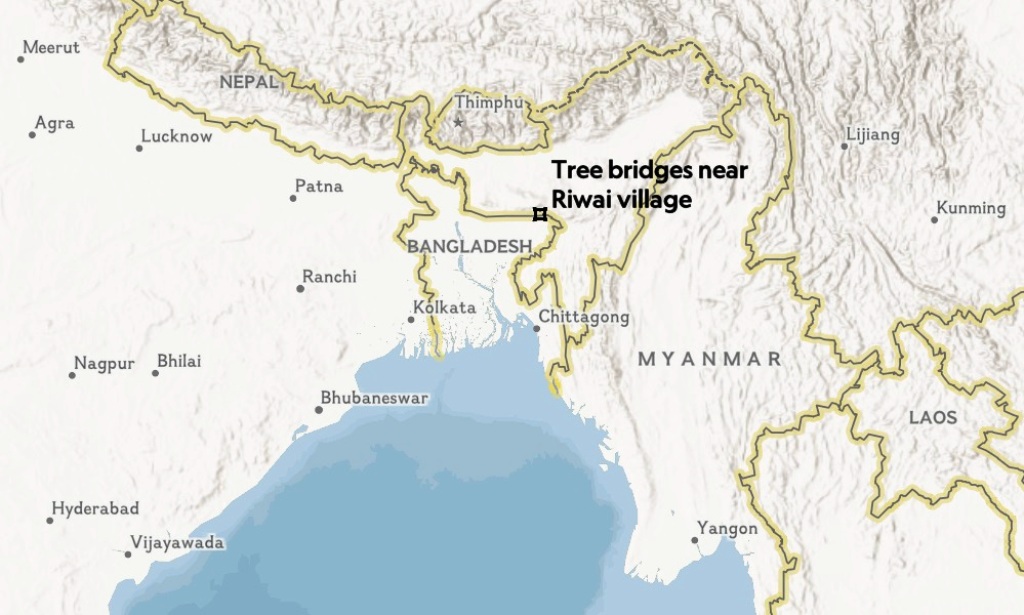Indian rubber tree roots entwine to build bridges that, unlike steel ones, become more robust with time.
Meghalaya state’s green hills—a steep, sodden, rumpled, and stream-slashed region of India’s isolated and gorgeous northeastern panhandle—can be painfully tough to walk.
The mist-sheeted corrugated hills are densely forested and covered with mud. During the rainy season, footpaths connecting communities periodically collapse into gorges teeming with waterfalls and rapid, impassable rivers. Navigating these natural obstacles requires delicate toes, iron lungs, and the capacity to observe for extended periods of time in a climate where 40 feet of precipitation pours from the sky every year. It takes thousands of years of concentration. Years of trial and error. Generations that solve problems.

The live tree-root bridges of the Cherrapunji region are the consequence of the Khasi and Jaintia people who have traveled these routes since they were newborns.
Ficus elastica, a common Indian rubber tree in the region, produces strong, rope-like aerial roots that may be slowly trained to grow horizontally over steep ravines and riverbanks over decades by hooking onto a scaffold of hollowed-out betel nut trunks or connecting to bamboo stalks. With excruciating slowness, yet ceaselessly, methodically, the roots are urged to entwine, to build the struts and supports for living footbridges that can accommodate up to 50 people at a time.
In the lush hills of Meghalaya, a global hub of botanical variety (over 3,000 blooming plant species) and a cultural crossroads, modern wood or steel bridges degrade swiftly. Tree-root bridges, on the other hand, may survive 500 to 600 years and become stronger with age.

It’s a visceral sense to walk through such organic structures—a rare, harmonic collaboration between the human imagination and nature’s increasing muscle.
The root bridges of Cherrapunji give softly, almost imperceptibly underfoot. They support the body’s weight in ways that dead concrete and metal cannot. Underhand, you can feel the great force of the linked trees via the living tissue fences. You go back in time.

When the feudal kingdom of Ahom, invaders from what is now Myanmar, ruled over the Meghalaya highlands, some of Cherrapunji’s living bridges arose.
They were carrying walkers when the corrupt British colonial trader Harry Inglis terrorized the people of the frontier region in the 1830s and 1840s through torture and assassination, according to A.J.M. Mills’ “Report on the Khasi and Jaintia Hills – 1853” (with an introduction by Dr. J.B. Battacharjee). “After his death, his widow Sophie placed her husband’s body in a glass coffin on the verandah, telling the Khasis that he would rise from the dead and avenge himself on anyone who wronged her,” one East Khasi Hills historian recounted. “Sophie’s logic took advantage of the Khasis’ fear of Harry’s power, even after he died.”

They dragged my walking partner, Priyanka Borpujari, and myself through the trails of northeastern India into the future.
across our lengthy trek, we inched eastward, into Myanmar, across breathing bridges. Regarding memory-based architecture. It rained and it shone.






